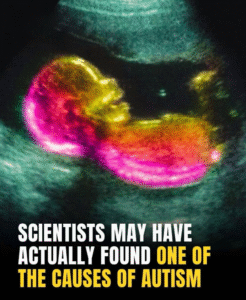Study Identifies Possible Connection to Autism Development
A new scientific study has uncovered a potential link that could help researchers better understand the development of autism spectrum disorder (ASD). Autism is a complex neurodevelopmental condition characterized by challenges with social skills, communication, and behavior. While its exact causes remain unclear, scientists believe it stems from a combination of genetic and environmental factors. This recent study offers fresh insight into how these elements may interact.
Researchers focused on how prenatal factors may influence brain development in ways that increase the risk of autism. The study examined the role of certain environmental exposures—such as pollution, inflammation, and maternal stress—during pregnancy. These stressors were found to potentially alter key processes in fetal brain development, especially in areas related to communication and sensory processing.
One of the study’s major findings involved inflammation in the mother’s body during pregnancy. Inflammation is part of the body’s immune response, but when it becomes chronic or occurs at key points in fetal development, it may interfere with normal brain growth. Researchers observed that high levels of certain inflammatory markers in the mother’s blood were more frequently present in pregnancies that resulted in children later diagnosed with autism.
Additionally, the researchers explored how genetic vulnerabilities could interact with these prenatal environmental factors. Some children may inherit genetic mutations or variations that affect how their brains develop or how they process environmental signals. When these genetic traits are combined with prenatal stressors, the likelihood of autism may increase. This gene-environment interaction is now a growing area of study in autism research.
The study also used brain imaging techniques on infants to detect early changes in brain structure and connectivity. Differences in brain networks were observed as early as a few months after birth in babies considered at higher risk for autism. These subtle changes in brain connectivity could eventually become markers for earlier diagnosis and intervention.
While the study does not claim to identify a single cause of autism, it adds valuable evidence to the idea that a combination of biological and environmental factors plays a role in its development. Scientists emphasized that not all children exposed to these prenatal conditions will develop autism, and not all individuals with autism have the same environmental history. Autism is highly individual, with a wide range of experiences and challenges.
Experts say these findings highlight the importance of maternal health during pregnancy. Reducing exposure to environmental pollutants, managing stress, ensuring proper prenatal care, and monitoring inflammation could play a role in lowering risk. More research is needed to better understand how and when these factors influence brain development and how to use that knowledge for prevention or early support.
In conclusion, this study strengthens the case for a multifaceted view of autism, where genetics and prenatal conditions work together to shape outcomes. It offers hope that with continued research, early detection and improved interventions could become more effective, helping families and individuals navigate the challenges of autism with better tools and understanding.


